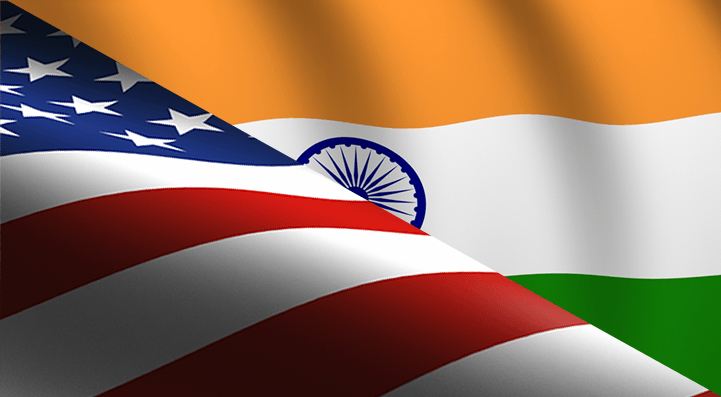India & US – head or the heart?
June 26, 2017 | Expert Insights

On Saturday evening, (Sunday morning India time), Indian Prime Minister, Narendra Modi landed in US to meet with Donald Trump for the first time since the latter became the US President.
Many will be looking at this visit to set the tone for what the future holds in terms of a gainful relationship between the two nations.
Here’s a historic look at the relationship shared by both countries.
When the first seeds were sown
India’s relationship with the US was at best frosty during the Cold War years. This is mainly due to the fact India refused to align with either the US or the Soviet Union and was even the founding member of the Non-Alignment Movement. Conversely, India’s arch rival, Pakistan, joined the Western Bloc in 1954. While India did not align itself to either country during the Cold War, it did share close ties to Soviet Union, which further incensed the US government. However, it wasn’t a period devoid of communication. The years since India got independence from the British Empire, the US government helped the fledgling nation through foreign aid. From 1947 to 1959, US provided $1.7 billion in aid, including $931 million in food to India.
But it was US President Dwight D. Eisenhower in 1959, whose visit to India set the foundation to a beneficial relationship between both nations. During his visit he made the time to visit the Taj Mahal and spoke at a public rally in New Delhi. But he made sure to demarcate a difference between the equation the US shared with Pakistan and India by noting that America’s relationship with Pakistan was a matter of the heart and its relationship with India was a matter of the head.
Green Revolution – saving millions from starvation
India was frequently hit by famine from 1940s to 1970s. Millions in the nation suffered from malnutrition and many even starved to death. Due to a number of reasons, including faulty food distribution, food security became one of the biggest threats to the young nation. It was at the time when an American scientist called Norman Borlaug changed the course of the nation’s history by introducing the famous “dwarf wheat” which he had himself developed. And thus jumpstarted the Green Revolution with the help of Indian scientists like MS Swaminathan and ensured that the country would be able to feed itself in the future.
The Bush years
Over the years, India and America continued to cement relations but it wasn’t always positive. After India conducted a series of nuclear tests in 1998, a “deeply disappointed” United States government led by Bill Clinton imposed sanctions on the country. But the imposition of those sanctions was short-lived as during his visit to India in 2000, he formally lifted them and reinforced friendly relations between both nations. It has been described by pundits that the US President who was in many ways a true friend of India, was George Bush Jr. It was during his visit when India and the US came up with the framework of the India-US nuclear deal thus making India the only country outside of the Proliferation Treaty to be allowed to pursue nuclear commerce.
Contemporary relations
With President Barack Obama, both former PM Manmohan Singh and current PM Narendra Modi shared an easy relationship. There has also been an increase in scientific collaboration between the nations; something evident with the setting up of United States-India Science & Technology Endowment Fund in 2009, which provides grants of up to $500,000 for joint projects between the U.S. and India. Additionally, the Indian Space Research Organisation and America’s National Aeronautics and Space Administration announced that they will be jointly building a satellite called NISAR. This is the first-of-its-kind space satellite being built between the two space agencies.
Under the NDA government, Indian PM Modi has staunchly pushed for more ties with the US government. This marks his fifth visit to the nation in the three years he has been Prime Minister.
Assessment
Our assessment is that both Modi and Trump will be approaching the scheduled “working lunch” to come out as friendly as possible at least for the sake of optics. However, one can only gauge the success of the visit if both leaders are able to successfully strike a balance between the nations that is beneficial for all parties involved. Can there be successful ties established between the nations that will go beyond striking military deals? Only time will tell if this is a relationship that is a matter of the heart or the head.








Comments